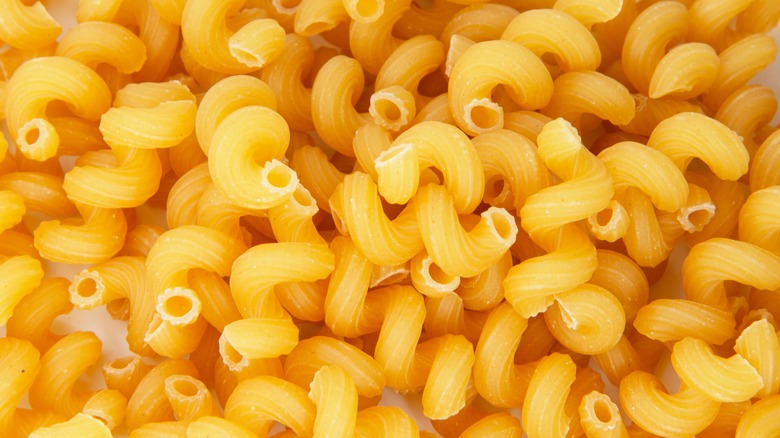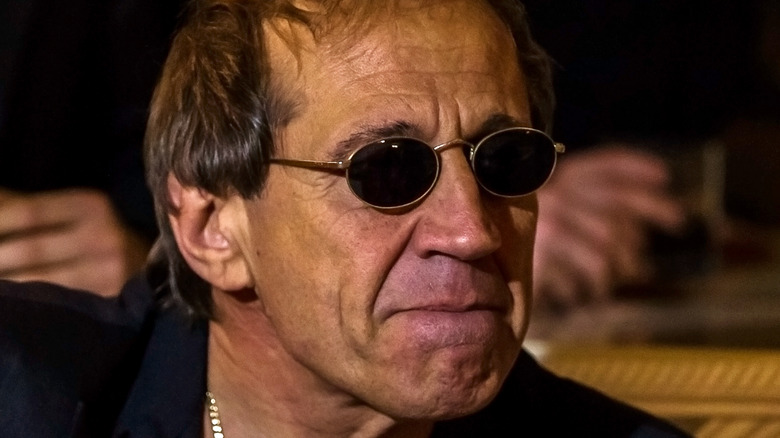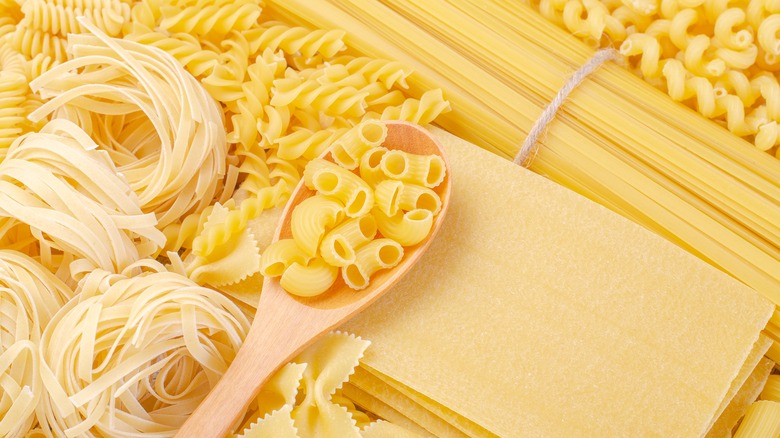Cavatappi Is Named After This Pop Singer
If there were such a thing as a Library of Pasta Shapes, the first floor would be devoted to pasta's most commonly referenced configurations. Here you'd find spaghetti, linguini, penne, and rigatoni, each of which has a place in the proverbial cookbook that houses some of the most iconic Italian recipes. Many of these recipes allow for the user's choice when it comes time to add the pasta, while others call for a specific shape that lends itself well to the dish. More often than not, contemporary recipe developers may suggest shapes that hold sauce particularly well.
In addition to their best applications, this hypothetical library would likely include the etymology behind each shape's name. The entry for cascatelli — the brainchild of Sfoglini and Dan Pashman that came to pantries in 2021 after three years of research and development, per The New York Times — would point to the root "cascata," the Italian word for waterfall. Spaghetti supposedly gets its name from the word "spaghetto," which translates to "little cord," per Britannica. But over in the cavatappi section, the library would point you to a biography of an Italian pop singer.
Adriano Celentano is as limber as macaroni
Cavatappi isn't as new to the pasta circuit as cascatelli, but it certainly doesn't go back centuries. According to Mental Floss, the hollow corkscrew-shaped pasta came to be in the 1960s by way of the world's largest pasta producer, Barilla, which originally branded it as cellentani. According to the Barilla's Pasta Encyclopedia, cavatappi/cellentani's coiled shape is a nod to the word "spring," a nickname for the jaunty-footed Italian pop singer Adriano Celentano, who's remained a darling of popular Italian music well beyond the 1960s. Celentano has also been referred to as "il Molleggiato" ("the flexible one") for his limber dance moves, according to A Million Steps.
Mental Floss adds that the name cavatappi came to be used as an umbrella term for the shape since Barilla had the rights to the name cellentani. We can't find any statements from Celentano regarding his prestigious pasta honor, but we like to think he has a lifetime supply of the macaroni-like pantry staple in his kitchen.
Shaping the history of pasta
Despite pasta's ubiquitousness in Italy, most people know that it originated far from the Bel Paese. A rundown on PBS' The History Kitchen mentions the common myth that Marco Polo was the first to bring pasta to Italy from China in the 13th century. But Polo's findings in "The Travels of Marco Polo" are largely retained through oral history, and according to PBS, that pasta had already gained popularity in other parts of Italy by the time Polo returned from his travels. If there's any truth in the tall tale, it's that the first plate of pasta likely wasn't eaten in the Mediterranean.
A timeline on Share the Pasta suggests that the earliest records of pasta can be traced back to a carving on an Etruscan tomb dating back to the fourth century B.C. and that people in China have been making "noodle-like food" since at least 3000 B.C. While pasta wasn't born in Italy, the Italians certainly made the food their own by inventing over 1,300 pasta shapes, per Oretta Zanini De Vita's "Encyclopedia of Pasta."


